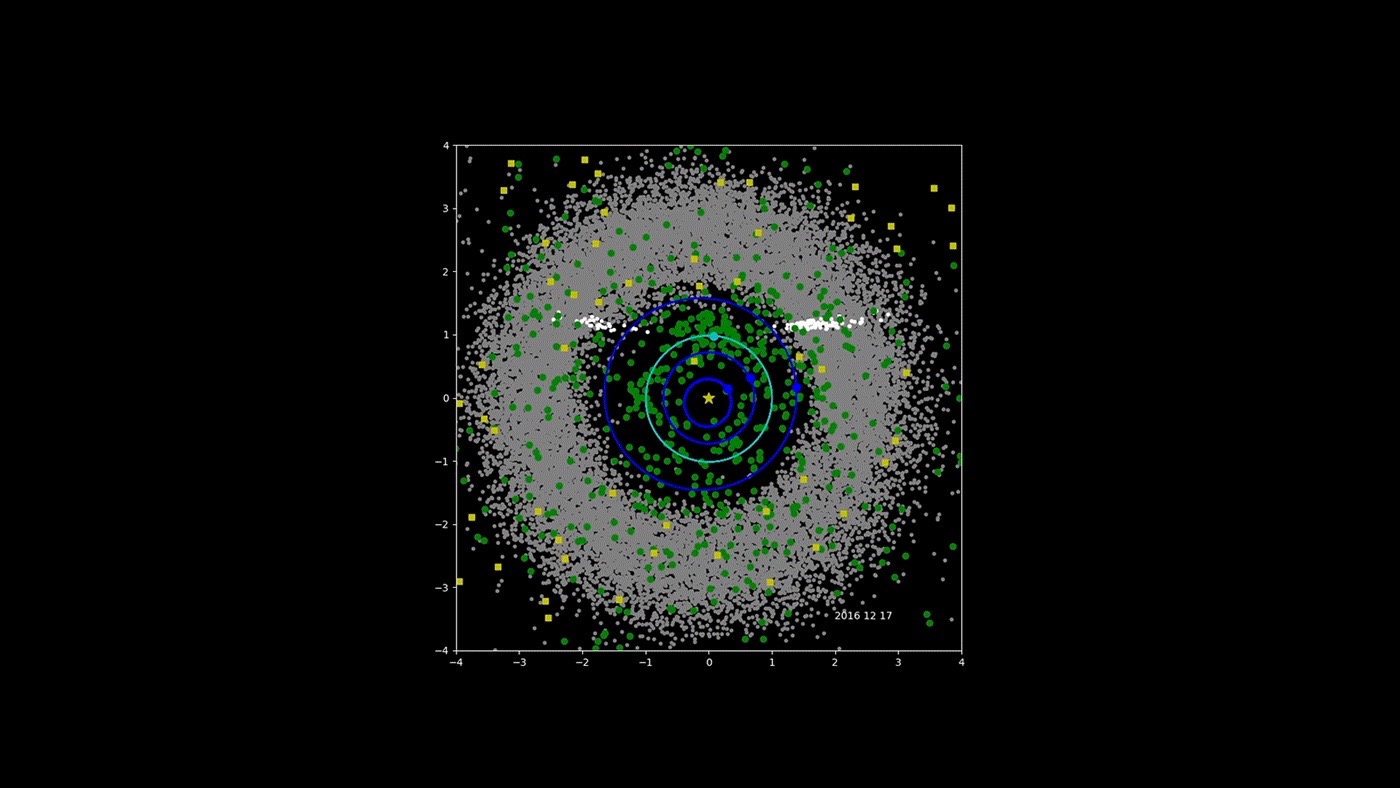See Thousands of Asteroids Swirl Around the Sun in This NASA Video
The inner solar system looks downright crowded in a new video showing the fruits of an asteroid-hunting spacecraft's labor.
The video plots the data gathered during the first four years of NASA's NEOWISE mission, which has spotted and characterized more than 29,000 objects since December 2013. Most of those are asteroids in the main belt between Mars and Jupiter, but the total includes nearly 800 near-Earth objects (NEOs) and more than 130 comets, mission team members said.
"NEOWISE continues to expand our catalog and knowledge of these elusive and important objects," mission principal investigator Amy Mainzer, of NASA's Jet Propulsion Laboratory in Pasadena, California, said in a statement.
"In total, NEOWISE has now characterized sizes and reflectivities of over 1,300 near-Earth objects since the spacecraft was launched, offering an invaluable resource for understanding the physical properties of this population, and studying what they are made of and where they have come from," she added.
The spacecraft launched as the Wide-Field Infrared Survey Explorer (WISE) in December 2009 to perform a broad, all-sky survey in infrared light. WISE completed this original mission in 2011 and was then placed in hibernation.
But the probe was awakened in September 2013 and given a new mission — to aid NASA's effort to better understand the huge population of space rocks zooming through Earth's neighborhood. This is NEOWISE.
The new mission's fourth year was quite productive: Between December 2016 and December 2017, NEOWISE captured more than 2.5 million infrared images of the sky and discovered 10 objects that have been classified as potentially hazardous asteroids, NASA officials said.
Breaking space news, the latest updates on rocket launches, skywatching events and more!
To date, astronomers have discovered about 18,200 near-Earth objects. But this tally is just barely scratching the surface; the total NEO population is thought to number in the millions.
Follow Mike Wall on Twitter @michaeldwall and Google+. Follow us @Spacedotcom, Facebook or Google+. Originally published on Space.com.

Michael Wall is a Senior Space Writer with Space.com and joined the team in 2010. He primarily covers exoplanets, spaceflight and military space, but has been known to dabble in the space art beat. His book about the search for alien life, "Out There," was published on Nov. 13, 2018. Before becoming a science writer, Michael worked as a herpetologist and wildlife biologist. He has a Ph.D. in evolutionary biology from the University of Sydney, Australia, a bachelor's degree from the University of Arizona, and a graduate certificate in science writing from the University of California, Santa Cruz. To find out what his latest project is, you can follow Michael on Twitter.

